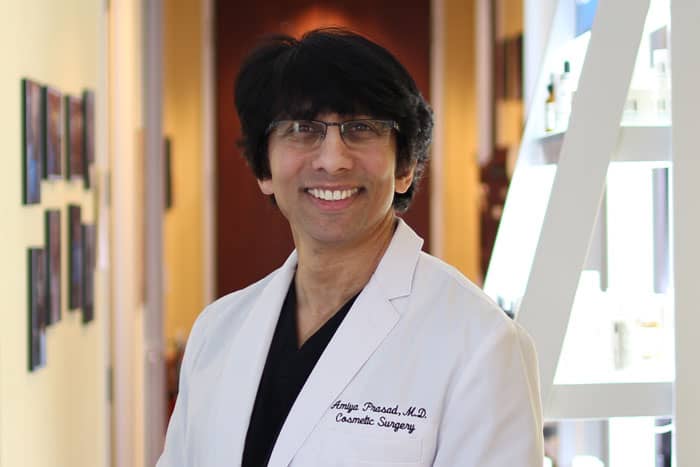Platelet-rich plasma, or PRP, has received increased attention in recent years as it has gained acceptance among doctors in cosmetic medicine. When I first started using PRP to improve skin quality for my patients in the early 2000s, cosmetic and plastic surgeons were skeptical, despite its success in oral and orthopedic surgery. Fast forward to today when PRP is being promoted by the same cosmetic doctors who were initially opposed to it. The marketing of PRP has created a public perception that it is a cure-all for all eyelid issues, including hooded eyes, eye bags, hollow eyes, and dark under eye circles. I’ll go over what PRP can and cannot do for your eyelids.
What is PRP?
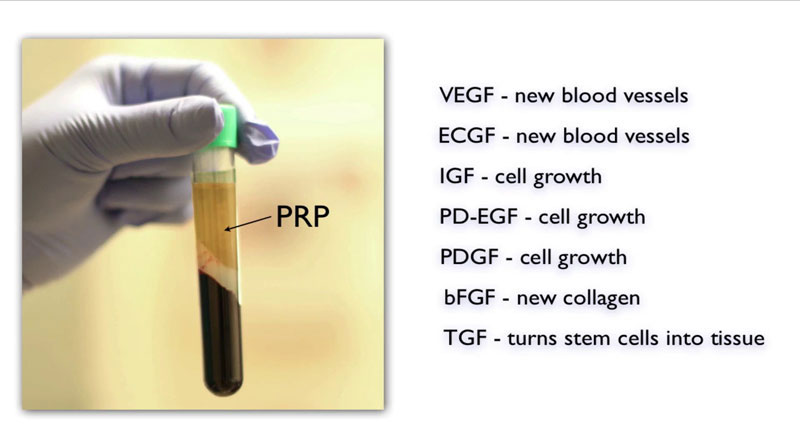
PRP is a concentrated form of wound healing and growth factors found in blood that are used to heal cuts. PRP preparation begins with a routine blood draw, followed by spinning the blood in a centrifuge to concentrate the platelets. The blood’s dark red components are separated, leaving a clear, yellow serum that is PRP. With wound healing and growth factors, the most obvious use for PRP is to speed up healing, which is why it was first used in oral surgery and orthopedic medicine, such as joint and tendon healing.
PRP Injection Under Eyes
Lower eyelid skin, like other skin areas, is an area of the eyelids where PRP works well. Collagen is a term that is frequently used in cosmetic medicine and cosmetic products because it is the protein that binds the skin and gives it strength and elasticity. As part of the aging process, the body loses about 1% of its collagen each year.
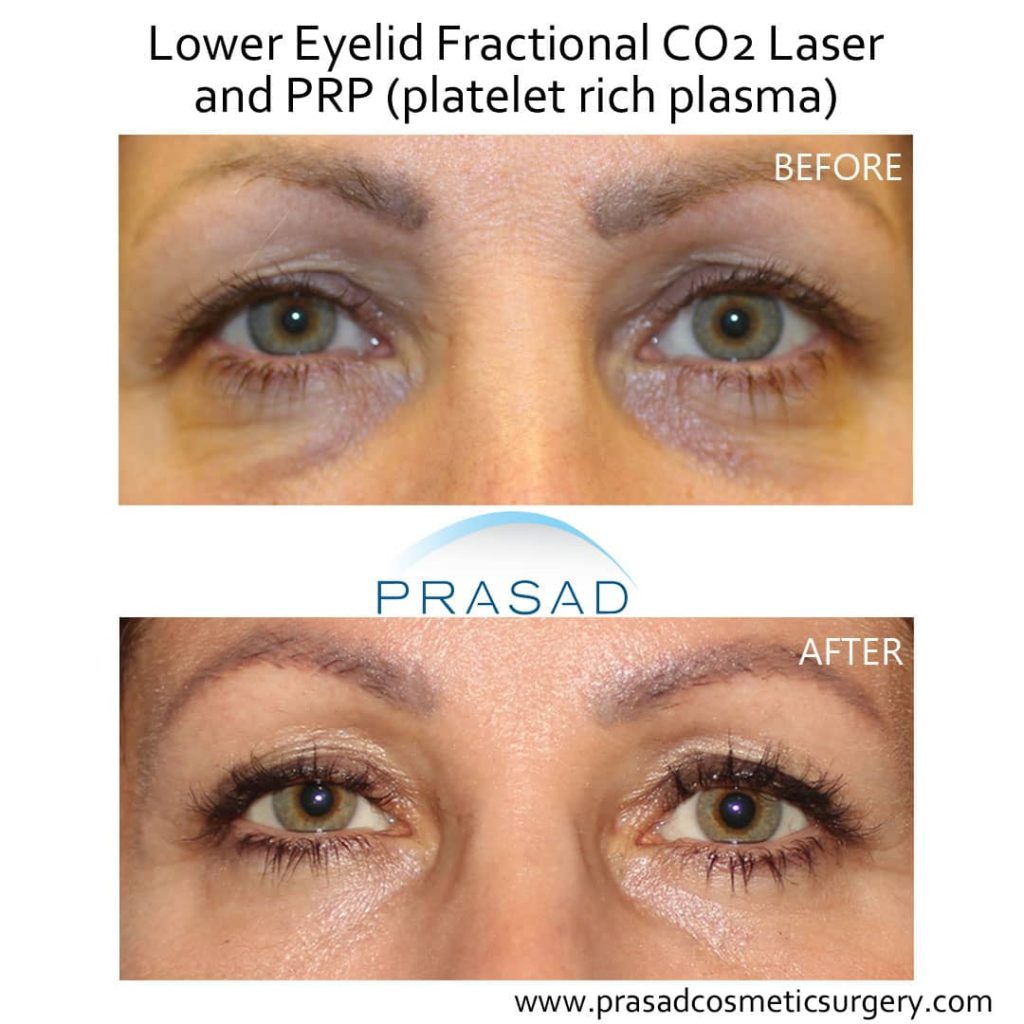

In general, the body responds to a wound or injury by producing collagen for healing and repair. The goal of treatments such as microneedling, laser, and radiofrequency treatments is to cause a controlled injury to the body, causing the body to respond by producing collagen, which improves the skin. PRP can stimulate the body’s collagen production without the use of heat.
PRP for Eye Treatment
PRP can help treat lower eyelid issues such as dark circles under the eyes by increasing blood supply and circulation to help remove iron deposits, treat pigmentation, increase collagen production to thicken thin lower eyelid skin so the darker anatomy is not visible through the skin, and improving overall skin quality and texture that other treatments cannot provide, which are useful in treating under eye wrinkles.
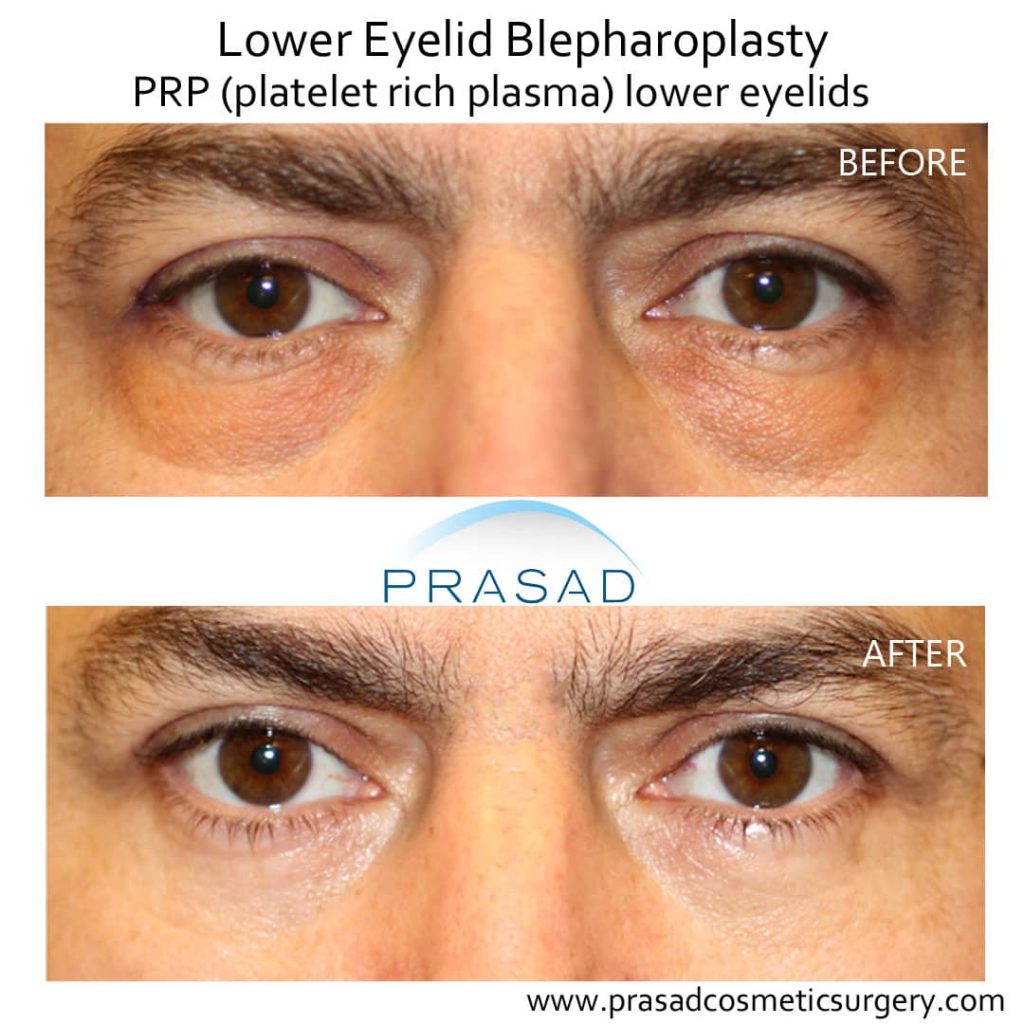
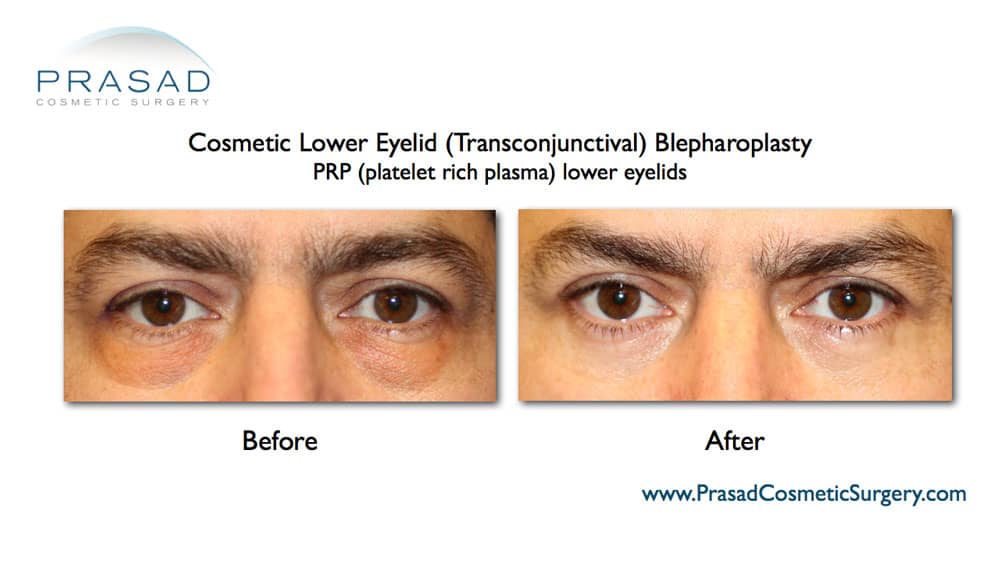
PRP can be combined with a laser or radiofrequency treatment to tighten and resurface the skin. I frequently alternate a thermal treatment such as a laser with PRP to reduce heat exposure, while still stimulating collagen. PRP can also be combined with hyaluronic acid in a gentle yet effective procedure called Skin Boosting to improve lower eyelid skin quality.
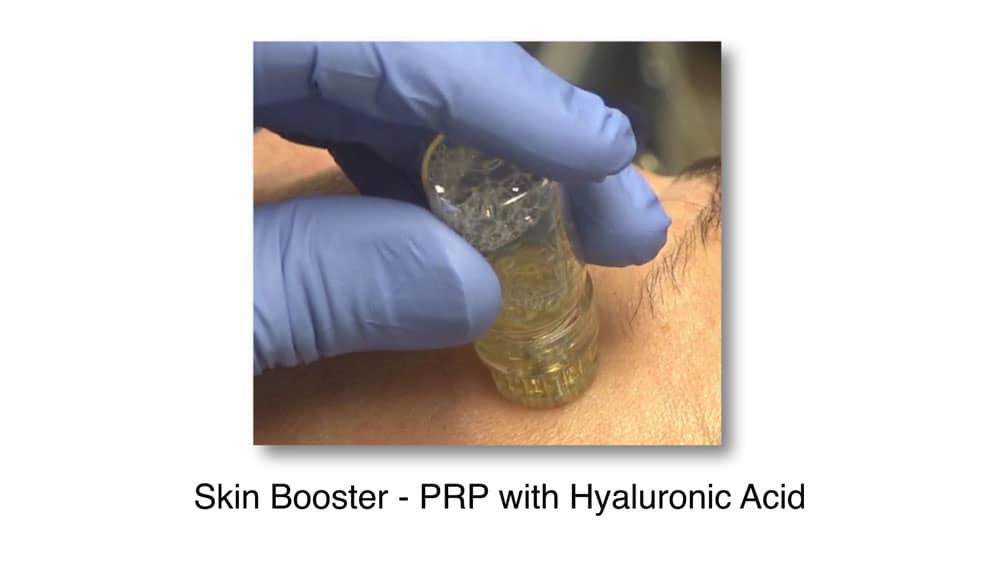
Is PRP under eyes better than fillers?
While PRP is excellent for improving the skin quality of the lower eyelids, it is not a treatment for under eye bags, or under eye hollowing. People frequently inquire whether PRP can be used to treat eye bags instead of surgery, or whether PRP can be used to treat under eye hollowness instead of cosmetic fillers (under eye fillers), but PRP cannot treat either of these problems on its own. Under eye bags that are always present are caused by prolapsed orbital fat, which is normally found around the eyeball for cushioning. Since prolapsed orbital fat cannot be reduced with PRP injections, eye bags must be surgically treated for sculpting and removal of fat, or camouflaged with a filler. PRP may aid in healing after lower eyelid surgery, and may improve lower eyelid skin if wrinkles and dark circles are present.
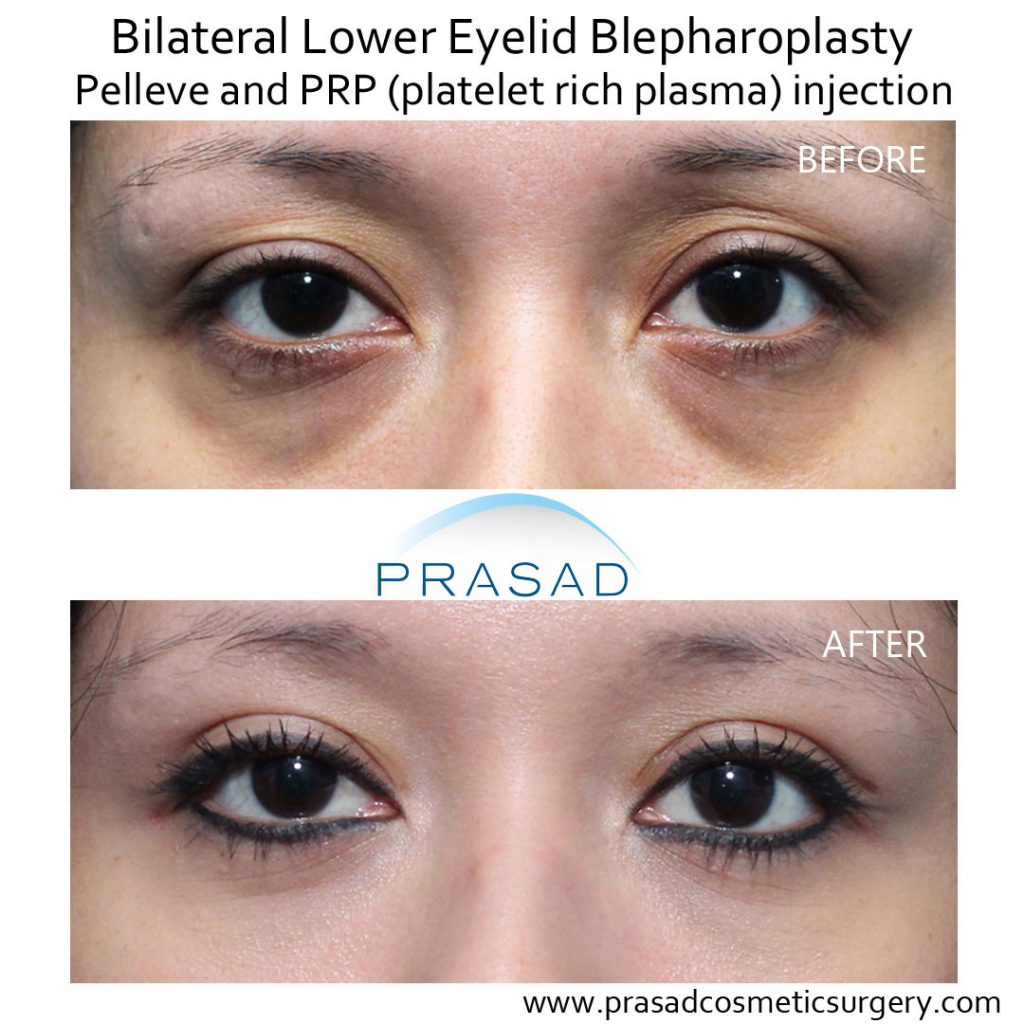

What PRP Cannot Treat
PRP cannot treat hollowness in the upper or lower eyelids on its own. PRP can improve the essential fat layer in other areas of the face, so when injected into areas like the cheeks or forehead, it provides a little volume, but not enough to replace a cosmetic filler. Since the essential fat layer is absent in both the lower and upper eyelids, injecting PRP into the eyelids can benefit the skin, but not the underlying cause of hollowing beneath the skin, which is a lack of orbital fat.
However, adding substantial volume to the under eye area to treat hollowing does require filler treatment, or in some cases a silicone tear trough implant, but not grafted fat due to a high rate of complications when used under thin eyelid skin. PRP can be used in conjunction with a filler to concurrently improve lower skin quality, and can actually extend the effective life of hyaluronic acid fillers.
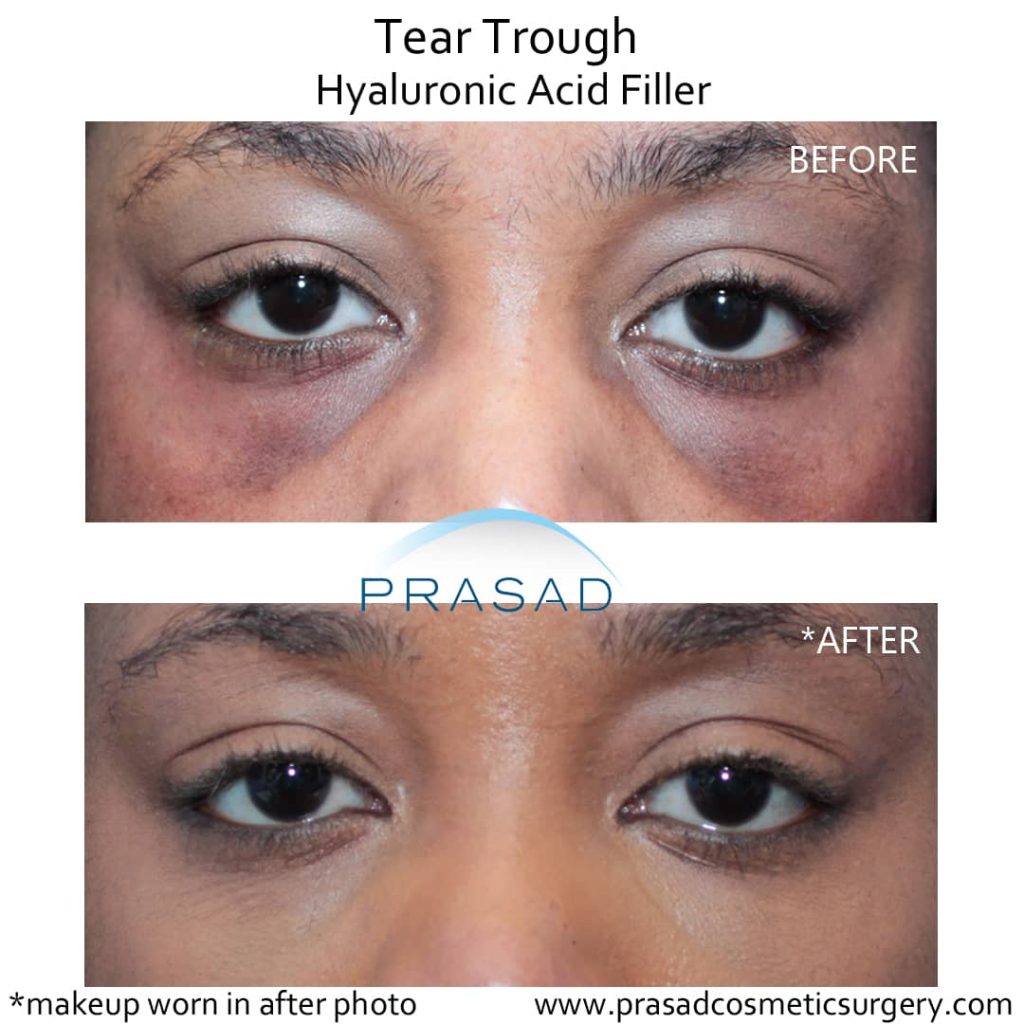
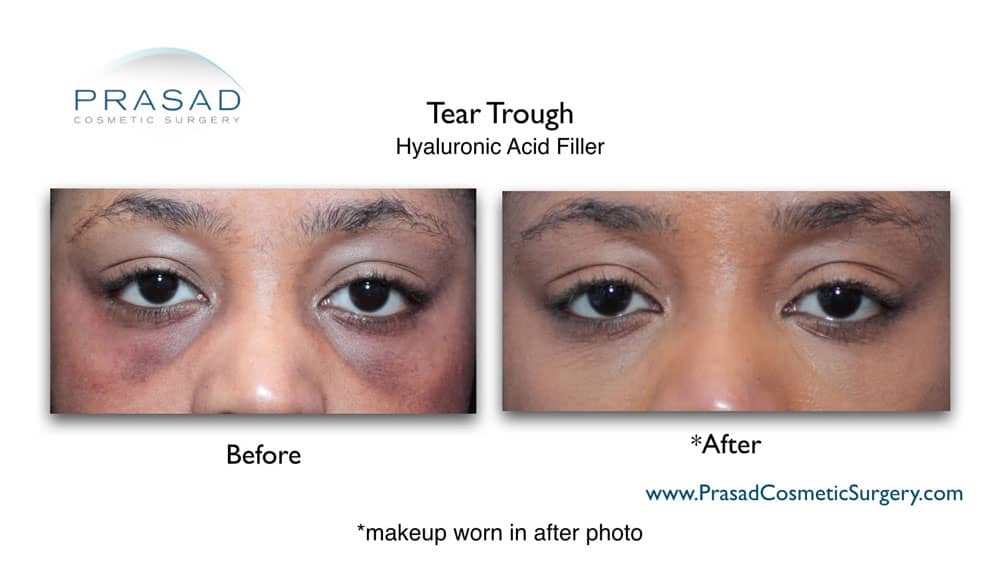
PRP cannot also be used to treat upper eyelid hooding or stretched skin. Dermatochalasis is a condition in which the upper eyelid skin becomes lax or stretches as it ages. Dermatochalisis is a common aging condition that many people believe can be treated with PRP. Stretched eyelid skin is redundant skin because it serves no purpose in eyelid support or function, and it can be surgically excised during an upper blepharoplasty. Some milder cases of eyelid skin laxity can be tightened non-surgically with the Smooth Eye procedure, which uses PRP concurrently or in between laser sessions to improve skin thickness and quality.
In some cases, the brow can be lifted without surgery by using Botox or another neurotoxin to relax the muscles that push the brow down, thereby alleviating the hooded appearance. PRP can improve the quality of the skin on the upper eyelids to treat wrinkles, sun damage, and discoloration, but it cannot provide a lifting or tightening effect to treat the appearance of hooded eyes.

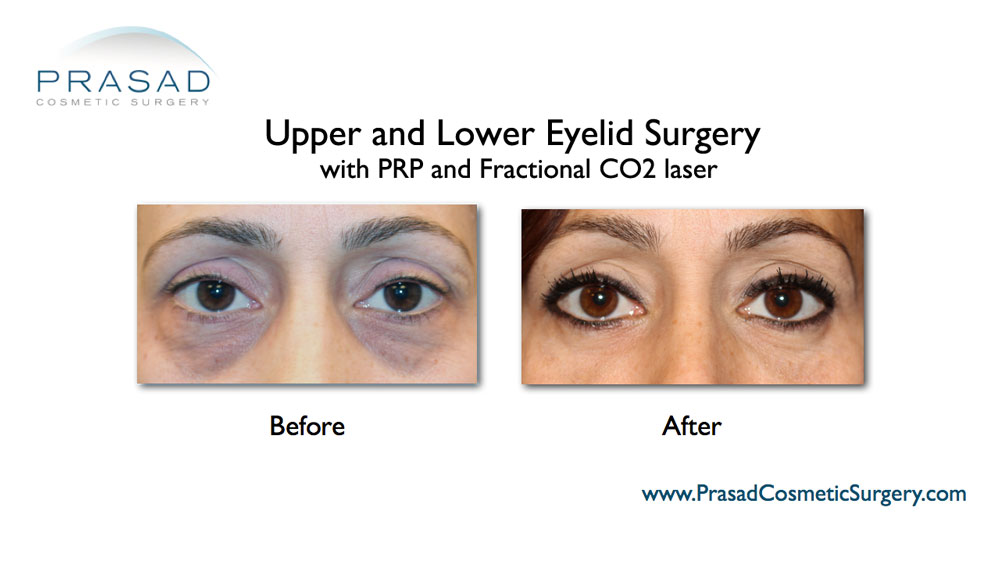
PRP for Wrinkles
PRP can also be used to treat crow’s feet lines in the eyes’ outer corners. Crow’s feet are most commonly caused by constant muscle movement, resulting in creasing at the outer corners of the eyes, which is most often treated with a neurotoxin such as Botox to reduce muscle activity and reduce visible creases. PRP can help improve skin quality and reduce crow’s feet by applying it topically after microneedling the area to open up channels in the skin for PRP to be absorbed, while microneedling also stimulates the body’s collagen response.
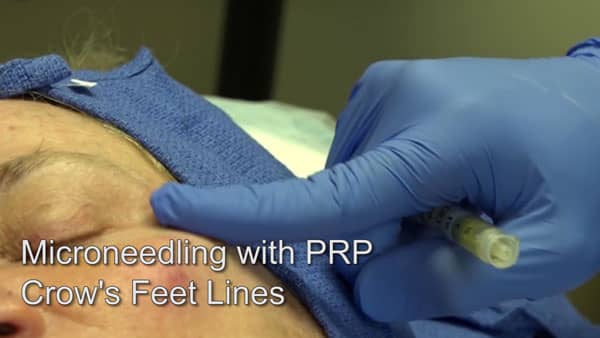
PRP is an excellent treatment for improving the skin quality and texture of the eyelids, as well as for hastening the healing of other eyelid procedures such as surgery or laser treatment. PRP, on the other hand, cannot replace surgical eyelid procedures or fillers. PRP can stimulate collagen without using heat, unlike other collagen induction procedures such as lasers and radiofrequency. So while PRP cannot completely replace these procedures, it can be used as a complementary collagen induction procedure for healing, or it can be alternated with these procedures to reduce heat exposure. I hope this has given you some direction. Please contact us to schedule a consultation for recommendations tailored to your specific situation.
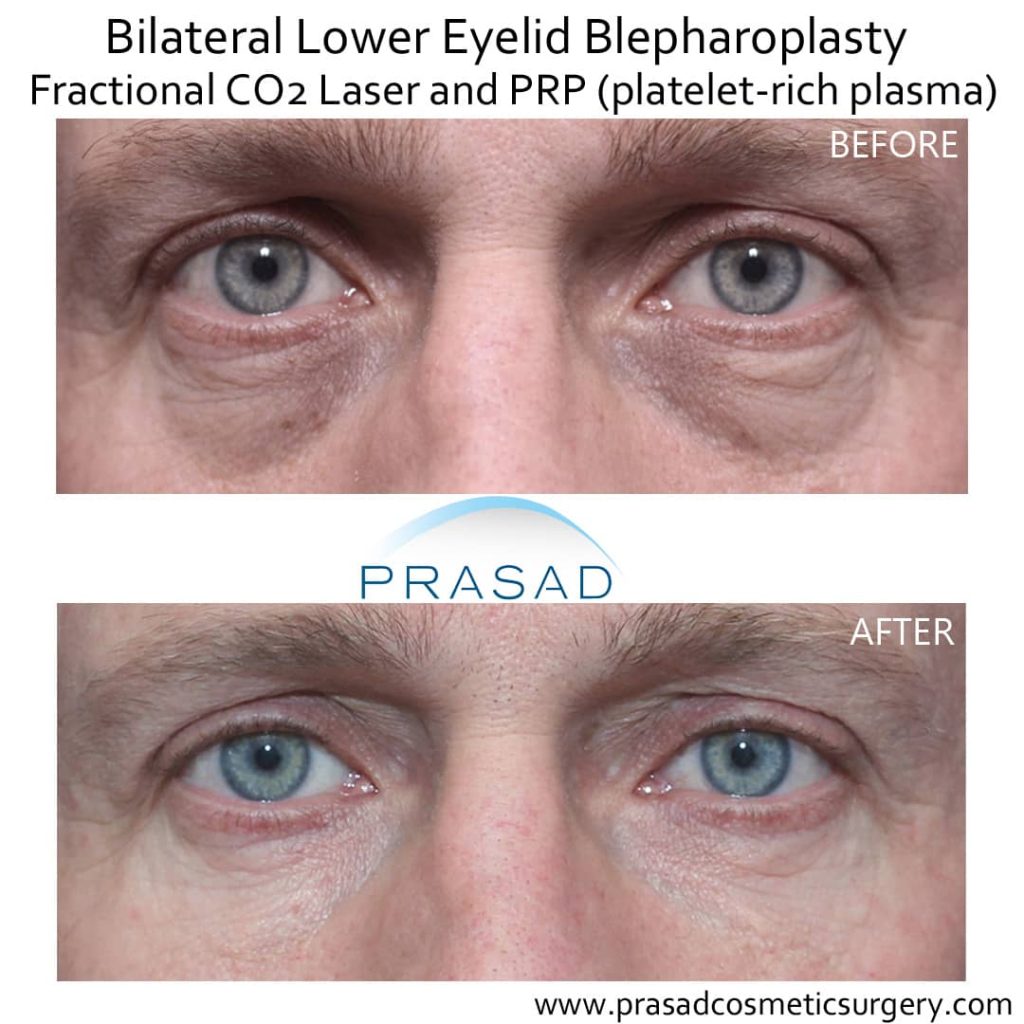
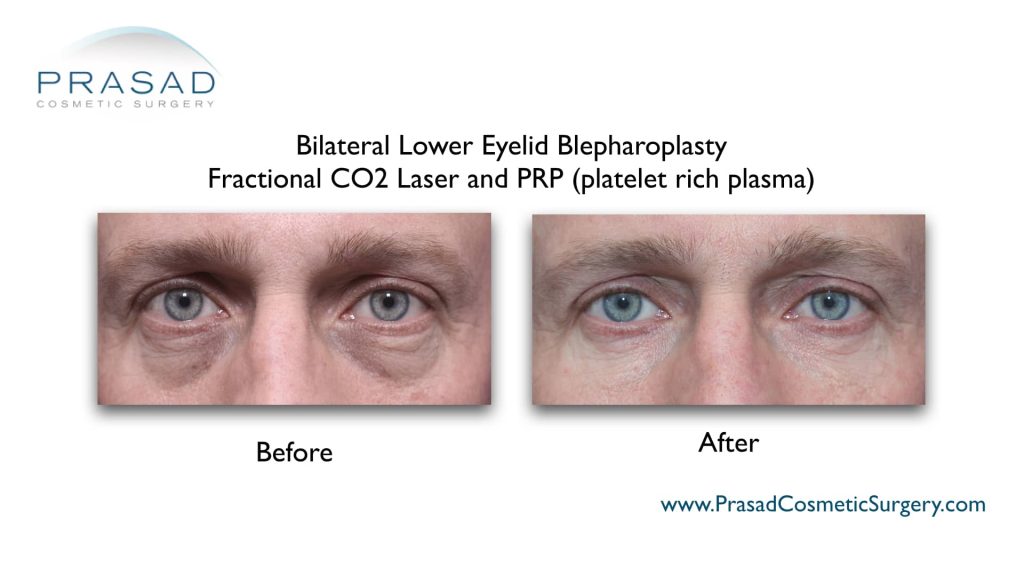
PRP Injection Under Eyes in Manhattan NYC and Long Island, New York
Dr. Amiya Prasad has over 25 years of experience as a Board-certified facial cosmetic surgeon and Fellowship-trained oculofacial plastic surgeon in New York City, and Long Island. He specializes in cosmetic eyelid surgery as well as non-surgical eyelid and eye area treatments such as PRP for eyelid skin rejuvenation. Furthermore, he was one of the first cosmetic surgeons to use PRP in cosmetic medicine, including skin rejuvenation, surgical healing, and hair loss treatment.
To schedule a consultation, please fill out the contact form below, or you may call any of our offices at (212) 265-8877 for Manhattan, New York City; (516) 742-4636 for Garden City, Long Island; or (703) 356-1336 for Vienna, Virginia.
